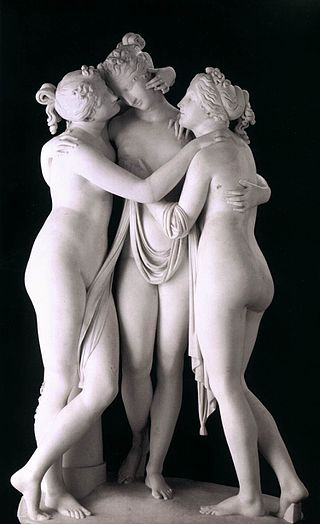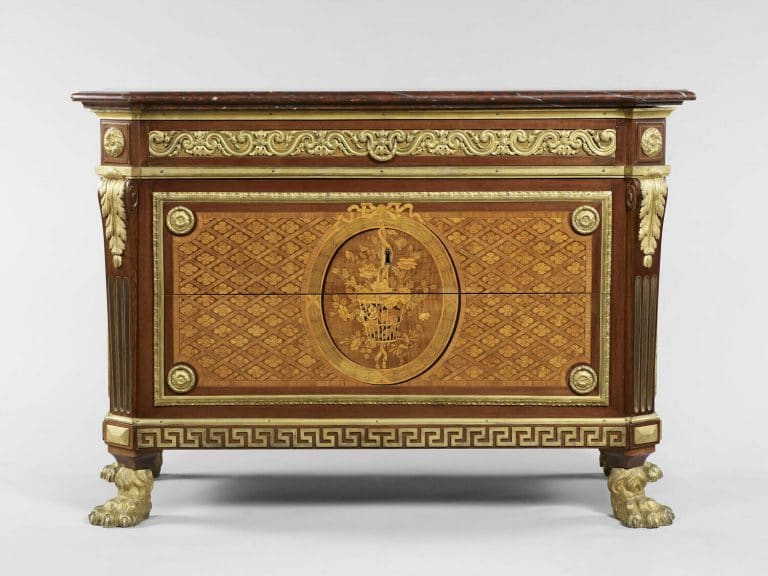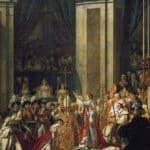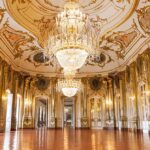Neoclassicism
The neoclassical style in the arts was born almost simultaneously throughout Europe like the bud of a flower that, with the first heat, can no longer hold back and opens up.
However, there were differences, linked to the cultural and territorial environments in which it developed, which gave space to a pleasant variety of interpretations. Last but not least, there were particularly creative figures who developed a personal vision of the style of lights through their own eyes and experience.
In France the foundations for the birth of Enlightenment thought were laid by Montesquieu, Voltaire, Russeau, Diderot and d’Alembert already in the first half of the 18th century; the encyclopedic work of the last two was crucial for the renewal of the arts but not only; Diderot wrote in 1762:
“This work will certainly produce, in time, a revolution in souls and I hope that tyrants, oppressors, fanatics and intolerants will not take advantage of it. We will have done humanity a service”
Tired of the excessive power of the aristocrats and their dissolute lifestyle, the Enlighteners became the bearers of a new ideology based on justice and rationality and, therefore, of a new social order. As is well known, this upheaval of thought had the direct consequence of the French Revolution, with wide repercussions throughout the Western world. One of the longest-lived and most important European monarchies was in fact dismissed, questioning the entire social order as it had been understood up to that moment. The conception of the sovereign as a direct divine emanation and of aristocratic titles as a right acquired with birth was completely overturned. In fact, the ideas of the Enlightenment promulgated the equality of human rights and the possibility for anyone, through their actions, to redeem themselves and reach important positions. Curious how Diderot’s concerns found confirmation in the rise of the new Emperor Napoleon Bonaparte.
Tired of the excessive power of the aristocrats and their dissolute lifestyle, the Enlighteners became the bearers of a new ideology based on justice and rationality and, therefore, of a new social order. As is well known, this upheaval of thought had the direct consequence of the French Revolution, with wide repercussions throughout the Western world. One of the longest-lived and most important European monarchies was in fact dismissed, questioning the entire social order as it had been understood up to that moment. The conception of the sovereign as a direct divine emanation and of aristocratic titles as a right acquired with birth was completely overturned. In fact, the ideas of the Enlightenment promulgated the equality of human rights and the possibility for anyone, through their actions, to redeem themselves and reach important positions. Curious how Diderot’s concerns found confirmation in the rise of the new Emperor Napoleon Bonaparte.
In the artistic field, as the name also indicates, Neoclassicism was characterized by a rediscovery of classical antiquity.
Art and ancient culture in general were seen as bearers of the values promulgated so much by the Enlightenment. The heroes of the past were virtuous characters who carried the justice longed for by their contemporaries. In all artistic expressions there is a return to order, in stark contrast to the previous styles, the Baroque and Rococò (see the respective articles). In art as well as in life, the intellect must dominate over the senses, we must avoid everything that is forced and unnecessarily sumptuous, seek the exact and the laid instead of the inexact and impetuous, create an image of beauty ideal, devoid of the imperfections of objects and natural beings.
This rediscovery of the ancient was undoubtedly linked to the new discoveries brought to light in the excavations of Herculaneum and Pompeii, disseminated through print reproduction.
The German archaeologist and historian Johann J. Winckelmann in his History of Ancient Art (1764) outlined an ideal of aesthetic perfection whose fundamental characteristics are dignity, grace, serenity, composure, to be sought also in the representation of pain : characters summarized in the famous definition of Greek statues as endowed with “a noble simplicity and a quiet grandeur”. The example to follow is that of the Greeks, “the only way to become great and, if possible, inimitable, is the imitation of the ancients”.
Among painters, Jacques-Louis David was certainly the bearer of this new style in paintings such as The Oath of the Horatii.
The composition is perfectly studied with rigorous lines, the symmetrical architectures in the background reflect the ancient buildings and even the characters in the foreground are bearers of those high moral values of democracy and patriotism, the foundation of society.

Among the sculptors, the most representative was undoubtedly Antonio Canova, whose works clearly show the derivation from ancient statuary (or at least as it was received and known at the time; today it is well known that the Greek statues were actually polychrome) .
In the decorative arts, as already mentioned, there are some sometimes substantial differences, depending on the dominant figures who set the taste through their gaze filtered by personal experiences.
The architect Robert Adams returned to England in 1758 after four years of Grand Tour through all the main centers of antiquity, not only Italians and bringing back an extremely clean, light and spacious style, fascinated by the pastel colors seen on his journey.
In Rome Piranesi, in addition to providing various prints depicting the findings, published various works of architecture, perspectives, grotesques, antiquities on the taste of the ancient Romans, invented and engraved by Gio. Piranesi, Venetian architect (1750) and then Diverse ways of adorning the paths (1769). It is interesting to observe how his inventions are influenced and indebted to the Baroque taste, the Roman style par excellence. It is no coincidence that the Roman furnishings took a few years to strip of a decorative abundance, which was nevertheless a continuous reference to the antiquity.
Parma saw the precocious and happy parenthesis of French rule, brought to court by the architect Ennemond Alexandre Petitot. He was also the first teacher of Giocondo Albertolli, one of the most interesting figures for neoclassical decoration in Italy. After having trained in Parma, he in fact worked in Florence to arrive in Milan by now mature, in the service of Archduke Ferdinand and in support of the architect Giuseppe Piermarini. He created a very Italian vision of neoclassicism, linked to the Renaissance seen in Florence and which produced ingenious solutions, such as the vaults of the archducal palace in Milan.
Naturally this profound stylistic change, which radically distorted the forms used up to the first half of the 18th century, also influenced the taste for furnishings and decorative objects.
The silhouettes of the furniture go back to being straight and symmetrical, but ample space is left to the decoration which also becomes rigorous. An example of this is the commode made in Paris by Jean-Francois Leleu. With this piece, the cabinetmaker illustrates the new “Greek style” well. The wooden case is in fact enriched with bronze inserts that move the surface but always in an orderly way. Greek frets and acanthus leaves mark the surfaces but particular attention is given above all to the modularity of the inlay. An archaic element can also be found in the feral legs that support the structure.

In addition to taking a cue from the classic style, some objects are faithful reproductions. In fact, a bronze tripod is known, coming from the temple of Isis in Pompeii reproduced in plate 44 of the 1st volume of the Vases, candelabra, memorial stones, sarcophagi, tripods by Giovan Battista Piranesi in 1778. These volumes had to be widely circulated among the artists of the era, as evidenced by the imitation of the original by Luigi and Francesco Manfredini, bronze workers in Milan.
Neoclassicism reflects a profound change in society, in which reason, the foundation of the Enlightenment philosophy, is also reflected in the arts. Dynamism and theatricality of the Baroque and Rococo are shunned, in search of an order then overwhelmed by the revolutionary events at the end of the eighteenth century.






